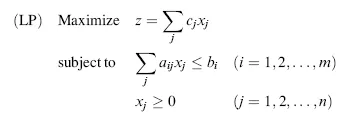
- English
- ePUB (mobile friendly)
- Available on iOS & Android
About this book
An accessible treatment of the modeling and solution of integer programming problems, featuring modern applications and software
In order to fully comprehend the algorithms associated with integer programming, it is important to understand not only how algorithms work, but also why they work. Applied Integer Programming features a unique emphasis on this point, focusing on problem modeling and solution using commercial software. Taking an application-oriented approach, this book addresses the art and science of mathematical modeling related to the mixed integer programming (MIP) framework and discusses the algorithms and associated practices that enable those models to be solved most efficiently.
The book begins with coverage of successful applications, systematic modeling procedures, typical model types, transformation of non-MIP models, combinatorial optimization problem models, and automatic preprocessing to obtain a better formulation. Subsequent chapters present algebraic and geometric basic concepts of linear programming theory and network flows needed for understanding integer programming. Finally, the book concludes with classical and modern solution approaches as well as the key components for building an integrated software system capable of solving large-scale integer programming and combinatorial optimization problems.
Throughout the book, the authors demonstrate essential concepts through numerous examples and figures. Each new concept or algorithm is accompanied by a numerical example, and, where applicable, graphics are used to draw together diverse problems or approaches into a unified whole. In addition, features of solution approaches found in today's commercial software are identified throughout the book.
Thoroughly classroom-tested, Applied Integer Programming is an excellent book for integer programming courses at the upper-undergraduate and graduate levels. It also serves as a well-organized reference for professionals, software developers, and analysts who work in the fields of applied mathematics, computer science, operations research, management science, and engineering and use integer-programming techniques to model and solve real-world optimization problems.
Frequently asked questions
- Essential is ideal for learners and professionals who enjoy exploring a wide range of subjects. Access the Essential Library with 800,000+ trusted titles and best-sellers across business, personal growth, and the humanities. Includes unlimited reading time and Standard Read Aloud voice.
- Complete: Perfect for advanced learners and researchers needing full, unrestricted access. Unlock 1.4M+ books across hundreds of subjects, including academic and specialized titles. The Complete Plan also includes advanced features like Premium Read Aloud and Research Assistant.
Please note we cannot support devices running on iOS 13 and Android 7 or earlier. Learn more about using the app.
Information




- Minimization problem
- Inequality of ≥ form
- Equation (equality constraint)
- Unrestricted variable (continuous or integer)
- Variable with a positive or a negative lower bound
- Variable with a finite upper bound






Table of contents
- COVER
- TITLE PAGE
- COPYRIGHT
- DEDICATION
- PREFACE
- PART I: MODELING
- PART II: REVIEW OF LINEAR PROGRAMMING AND NETWORK FLOWS
- PART III: SOLUTIONS
- REFERENCES
- APPENDIX: ANSWERS TO SELECTED EXERCISES
- INDEX